 |
| Margaret Atwood |
Brooke Prize 2019
How to write a Booker contender – by Margaret Atwood, Salman Rushdie and others
Where do Booker-prize authors find their inspiration? The authors on the 2019 shortlist reveal the secrets behind their novels
Margaret Atwood
In The Handmaid’s Tale, we left Offred here: “The van waits in the driveway, its double doors stand open. The two of them, one on either side now, take me by the elbows to help me in. Whether this is my end or a new beginning I have no way of knowing: I have given myself over into the hands of strangers, because it can’t be helped. And so I step up, into the darkness within; or else the light.” When readers were asking for a sequel, So The Testaments is a sequel, but not the kind that was once expected – even by me. That was the narrative thread they wanted me to pick up. But it would have been impossible for me to recreate that voice, so I kept saying no. Then I saw that another approach to the world of Gilead might be possible: a later time, different voices.
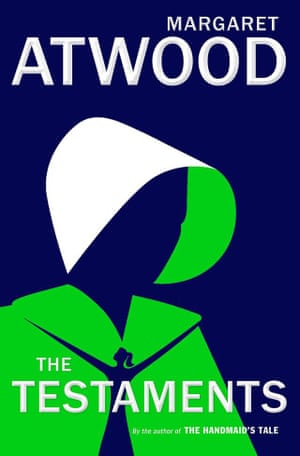
In many ways, The Testaments is an answer to all the questions readers have been asking me about The Handmaid’s Tale over the years. But it also belongs to our moment of history, when things in a number of countries seem to be heading more towards Gilead than away from it. Many rights won by women since the 1960s and 70s are under threat. At the heart of the matter is the simple question: ought the state to be able to requisition your body and use it to provide services, against your will and without paying for those services? Even in Gilead, women get fed, and there are no homeless. So from some angles, the real world is harsher.
The Testaments takes place more than 15 years after the end of The Handmaid’s Tale. It has three female narrators. Two are part of the new generation that has not known the world before Gilead. Much is made in The Handmaid’s Tale of how hard it will be for women to adapt to their Gileadean lives, but “for the ones who come after, it will be easier. They will accept their duties with willing hearts.” What is it like to grow up as a young woman within Gilead? And what is it like to grow up across the border in Canada, viewing Gilead as westerners once viewed iron curtain countries – as a totalitarian threat, but also as a mysterious hidden realm?
As for the third female narrator: what would it be like to be an older woman with considerable secret leverage within Gilead? How do you acquire power within a dictatorship, especially if you belong to a group defined as relatively powerless? What’s your backstory? Are you a true believer, an opportunist, a survivor who accuses and oppresses to avoid such a fate yourself? What do you fear? What are your goals? Who are your enemies? Might you have a secret agenda of your own?
Since I began The Testaments, events in the real world have taken one surprising turn after another. Some are alarming, and foreshadow power grabs and suppressions of freedoms in western democracies of a kind we haven’t seen for centuries. Others are more hopeful: young people especially are waking up to perils both environmental and political – these so often go together – and organising to combat these dangers.
Which leads to the final question I wanted to explore: since we know from the historical notes at the end of The Handmaid’s Tale that Gilead did not last – what brought it down? In my fiction, it is people. Being hopeful by nature, I like to believe it will be the same in real life.
Salman Rushdie
At its heart Quichotte is a very personal novel, arising out of the three places that have been most important to me – how they used to be, and what they are like now. It’s also a recognition of the fact that for me, family relationships, the love and failures of love within families, have been as important as romantic love. Brothers and sisters, fathers and sons, are at the heart of the novel. (So is romance, of course, in the form of Quichotte’s quest for Salma, but it’s treated tragicomically, as it deserves to be treated.) Also, it’s a novel about growing old and facing the end of life and making some sort of reckoning with how that life has gone. Beyond that, however, the specifics of character and story are all creations, not portraits. My desire for autobiography ended with Joseph Anton.
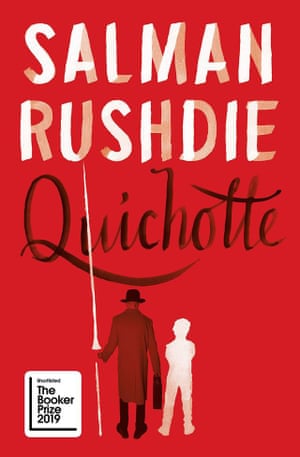
The idea had its origins a few years ago. Around the 400th anniversaries of both Cervantes and Shakespeare I read Don Quixote again, for the first time since I was at university, and almost at once my own old fool and his imaginary son/sidekick came into my mind. But they weren’t like Quixote and Sancho Panza. My Quichotte is not dolorous of countenance, but cheerful; an optimist, hopeful, believing in love. And my Sancho is a mutinous teenager. Also, the journey they embark on is not modelled on Cervantes. The book takes its inspiration from its great forebear but then goes its own way.
However, there are echoes between the books. Don Quixote is an “everything novel”, an attempt to capture as much of human life as possible, and that has always been my instinct too. It’s also astonishingly modern, even postmodern – a novel whose characters know they are being written about and have opinions on the writing. I also wanted my book to have a parallel storyline about my characters’ creator and his life, and then slowly to show how the two stories, the two narrative lines, become one.
Don Quixote is a metamorphic book, full of digressions and stories within stories, and I wanted mine, too, to become different kinds of story as it went down its road, so I used many different manners of the novel – the picaresque, the absurd, the spy novel, the science fiction novel, the realistic emotional drama – throwing many different kinds of net, so to speak, to try to capture a panorama of our own surreal, metamorphic time.
I wanted the book to be funny, but beneath the funny I wanted it to take on some dark materials: opioid addiction, corruption, racism, the divided societies that the US, the UK and India have all become. As well as Cervantes I thought about Saul Bellow’s The Adventures of Augie March, and road stories from Zen and the Art of Motorcycle Maintenance to Easy Rider. I was helped by my memory of science fiction stories from long ago. And finally I was inspired by the way in which immigrants from everywhere (Ocean Vuong, Jhumpa Lahiri, Chimamanda Ngozi Adichie) and writers of colour (Jesmyn Ward, Ta-Nehisi Coates, Tracy K Smith) are currently revolutionising American literature. And yes, I see myself as belonging to both those categories, and am happy – as the old guy in the room – to join the party.
Bernardine Evaristo
Fiction excavates and reimagines our histories; investigates, disrupts, validates and contextualises our societies and subjectivities; exercises our imaginations through flights of fancy, takes the reader on transformational adventures, and probes and presents our motivations, problems and dramas. What, then, does it mean to not see yourself reflected in your nation’s stories? This has been the ongoing debate of my career as a writer stretching back nearly 40 years, and we black British women know that if we don’t write ourselves into literature no one else will.
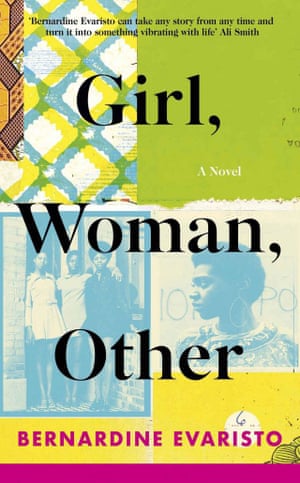
Perhaps they shouldn’t be expected to. After all, we humans are tribal. We look after those to whom we feel most aligned. I do know that we women are best equipped, with our insider knowledge of what it means to see the world through the prism of being black and female, to tell stories from our perspectives. That doesn’t mean we cannot be narrativized through the imaginations of those who are not us. Look at television drama and theatre, and I have always written across race and gender. We also realise that most people won’t notice that we’re not peopling the pages of their fiction, or be aware how hard it is for our aspiring writers to break through the Great Wall of Publishing. This will hurt and anger us when young, until we become resigned to the fact that we will always be seen as other, inconsequential, not worthy subjects of literature. And those who loftily counter-argue that literature is more meaningful than specific demographic experiences are often writing from privileged positions, usually about the specific demographic experiences of straight, white men. I hope that one day “people” will include everyone, but we’re not there yet.I employ polyphony in Girl, Woman, Other as a strategy against invisibility. I wanted to write multiple stories into being on an ambitious scale and to say that we matter and are as important, imperfect, complicated, compassionate, funny, selfish and psychologically fascinating as any other human being on the planet. The novel, which spans more than 100 years, with 12 mostly black female protagonists, had to be multi-generational, thereby tackling the bias towards female protagonists under 40, as if older women simply aren’t interesting. It also encompasses a non-binary figure and a variety of sexualities, occupations, British geographies and cultural backgrounds, predominantly with roots in the UK, Africa, the Caribbean, as well as India. Work, family, community and relationships are dominant themes, underpinned by how gender, race and sexuality is played out differently according to each character. Hattie is a nonagenarian Northumbrian farmer. Amma is a middle-aged lesbian theatre director. LaTisha works in a supermarket.
I call this book a “fusion fiction” novel, which I think best describes a work in which each character has their own chapter, but they are also “fused” into each other’s interconnected stories. The descriptor is apt for a free-flowing prose style that eschews traditional punctuation, including most full stops and all speech marks, in favour of what I call a “pro-poetic” patterning on the page. This form enabled me to segue seamlessly between the past and the present, character interiority and exteriority.
I was recently talking about Girl, Woman, Other at a book event when an audience member, who hadn’t read the novel, confidently surmised that it was about black women’s trauma. Now, this isn’t what I had said or in any way implied, but it was what she’d heard. She clearly wanted, or expected, my characters to be reduced to the trope of the Tragic Black, the suffering victim of oppressive individuals, cultures or regimes. The last thing I want to do is write about black women, or black people, as tragic victims. I believe in hope and redemption and I always give my characters agency. A novel celebrating black British womanhood surely has to spin on the axis of humour. We find comedy in everything, and above all, we laugh at ourselves, just like other human beings.
Chigozie Obioma
I came to the story that would become An Orchestra of Minorities after I witnessed the tragic shattering of an individual whose name was Jay. I was at a university in northern Cyprus in 2009 when he arrived, having been deceived by scammers masquerading as foreign university agents. This man would crumble inwards and fall into a deep psychological crisis that would culminate in a violent death days later – a head-first fall from a tall building. In the days before that fall, Jay had told me he’d come to Cyprus because he was deeply in love with a woman. That knowledge first led me to try to explore what the dynamic may have been between him and his betrothed. What kind of love would make a person sell all they have to be with their lover? So I tried to retrace his journey, an Odyssey of some sort in which my protagonist Chinonso would be sustained for a long time by the reality of love, but ultimately destroyed by the mythology of love.
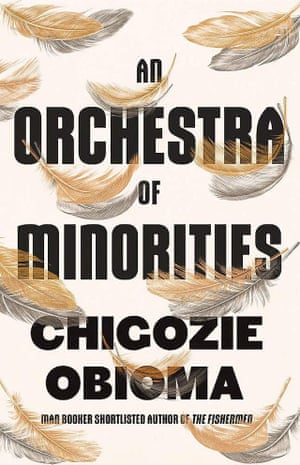
Jay’s peculiar shattering was itself an education. I’m deeply interested in the psychological complexity of shifts in characters: I ask in The Fishermen, how a brother who loves his brothers turns to hate them? In An Orchestra of Minorities, I ask how Chinonso who at the beginning is so self-effacing turns to become vengeful? For me this is the most salient thrust of my fiction: the quest to explore the evolution of human emotion from one extreme point to the other.So, with the story set, I needed a structure for it. I had grown up learning about the chi, this cosmic being whose ubiquity means it has to prefix my name: chi-gozie. My maternal grandfather was one of the few people in eastern Nigeria who never converted to Christianity. So, my mother grew up steeped in the odinani religion. Naturally, she had an Igbo worldview and would often allude to the chi, especially when events took negative turns. She would say something like: “This hardship is a result of your chi’s failure.”
How to tell this story that will examine the metaphysics of being and existence, destiny, fate, free will, love, immigration, class, race and revenge? I wrote sketches in my head until I encountered Paradise Lost by John Milton. That book, which investigates the fundamental fulcrum on which western civilisation is based, free will, was for me the answer. I knew then that I would tell this story through the mouth of the chi, this reincarnating spirit that has been reborn again and again for 700 years. I would attempt to draw the map of the Igbo civilisation, including landmark events such as the first encounter with the Portuguese in the 16th century, slavery, the British colonial period, the Biafran war, and the present time. The chi would be the centrepiece of the Igbo ontology, a belief that was the foundation of the Igbo egalitarian sociopolitical structure. And the Igbo ontology would stand as a microcosm of the complex beliefs that we had in Africa prior to colonialism, so that I would establish that the pre-colonial experience in Africa was not one long night from which the white man came to save us. I’m persuaded that at the heart of our problem in Africa (and the black diaspora) is that we have not come to understand fully that we already had successful systems, and thus we carry an unconscious sense of inferiority that must be destroyed.I believe it is my duty, my calling, to dig up these buried cities, reveal these cosmologies, and point my people to these truths and say: “See who we used to be.” It begins from writing our own cosmological novel, an Igbo Paradise Lost in which a spirit attempts to justify the ways of man to the gods.
Elif Shafak
There is a cemetery on the outskirts of Istanbul unlike any other. It is called the Cemetery of the Companionless. It has few visitors. Even the city’s notorious grave robbers give it a wide berth, they say, dreading “the curse of the accursed”. There are no flower bouquets, no marble tombstones. Neither names nor surnames. Only numbers. Wooden placards with numbers. Row upon row of them.
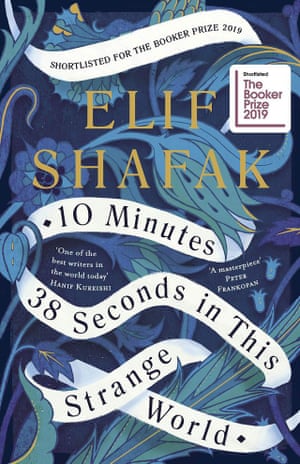
For some time now, I have been intrigued by this graveyard. I visited it a couple of times years ago, finding myself moved by its tranquillity. Since then I have been reading about it – researching, thinking, taking notes. But it was hard to collect information. Much of what this place symbolises is about forgetting, erasing, pretending it never was. When the numbers on the placards fade, all personal information can vanish into thin air.
Almost everyone interred in the cemetery is, in some way or another, an outcast. Many shunned by their families or communities. They have all been denied a proper funeral, a decent burial. Among the residents are members of various LGBTQ communities. There are citizens who have died of Aids-related illnesses, particularly throughout the 1980s and 90s. Due to the stigma, they have been sent over here, buried out of sight. Crack addicts, alcoholics, rough sleepers, missing citizens, mentally ill people … The undesirables. Those who have killed themselves, too. There are also a number of Kurdish insurgents brought here from different parts of the country. The state doesn’t want them to turn into martyrs in the eyes of their people. In addition to all these souls, there is a growing number of refugees. So in this most unusual graveyard an Afghan refugee or a Syrian refugee might be buried next to a TurWe always read in newspapers about refugees whose boats have capsized as they were trying to cross into Europe, but where are all these bodies taken once they are retrieved from the waters? They are taken to the Cemetery of the Companionless. kish transgender singer or a Kurdish sex worker. As an author I wanted to take at least one of those numbers, and give it a name, a story … My main protagonist, Tequila Leila, is buried here. I believe literature is, and always has been, a stubborn attempt to rehumanize those who have been dehumanized.
Numbers were important for me as I was writing this novel. I became interested in a series of medical studies that showed that at the moment of death, after the heart has stopped beating, the mind can remain active for another few minutes. In some cases, up to ten minutes. I wanted to add my own 38 seconds to that. What happens inside the human mind in that time? If it is true that the part of the brain that is in charge of memory is the last to shut down, what are the memories that remain from a whole life? This question gave me the structure of the novel. The first two words in this book are: “The End”. Right away readers know the main character is dead but as her brain keeps functioning, she remembers her past, minute by minute.I did not want a linear storyline because our minds do not work like that. Just as east and west blend in Istanbul, so the past and the present mix inside our minds. The non-linear plot line also made me aware of how precious each memory was. I had to be selective each time I started a new chapter. What would Leila remember now? Time was ticking by. I had to delete more than I wrote.I had to write a shorter novel, a tighter story. What Leila remembers, she remembers mostly through her senses. The smell of lemon and sugar, the taste of cardamom coffee. Perhaps this echoed my own experience with my motherland. I wrote this book at a strange moment in my life, not travelling to Istanbul, but somehow carrying it with me everywhere.
Leila’s story was inspired by real historical events alongside actual places and people I have seen once upon a time in the old city, although everything is fictional. I have come to learn over the years that, as well as stories, I am drawn to silences. There are a lot of those in this book, the things we cannot talk about. But even though the novel deals with heavy subjects, it’s a life-affirming story that celebrates diversity and friendship, as well as human resilience in the face of violence and oppression.
Lucy Ellmann
I wrote this book out of utter despair about people and the environment. But the way I wrote it turned out to be a blast. A blast from the past, in fact. To convey the workings of a person’s mind, I retrieved an earlier technique of mine: collage.
As a kid I used to love stories with tiny pictures replacing all the nouns. They are a form of collage, in that two different substances meet, the expected and the unexpected – conventional type, invaded by illustration. I’m still a sucker for a nice incongruous juxtaposition. Something alchemical and dynamic can happen when you pit one seemingly unrelated thing against another. Puccini’s Madama Butterfly features a snippet of “The Star-Spangled Banner”. It’s poignant and accusatory. Duchamp’s urinal is a type of collage, too: all ready-mades are, in that they shift back and forth between objecthood and its subliminal (or sublime) artistic implications.
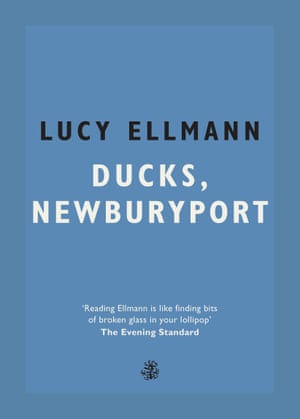
The collage show at the Scottish National Gallery of Modern Art (“Cut and Paste: 400 Years of Collage”) demonstrates that collage is not merely a 20th or 21st century aberration. Startling, ad hoc conjunctions of differing elements were going on long before that. 2-D collage started at least as far back as the invention of paper. Cabinets of curiosities are another kind of collage: assemblage. And in crazy quilts, oddments of fabric rub up against each other to the point of dizziness. Collage was adopted by the Cubists, and by abstract expressionists like Lee Krasner. Pop artists were big borrowers, shoving found objects into their work. Of the Surrealists, Schwitters was perhaps the most skilful practitioner of paper collage, while Eileen Agar described collage as “a form of inspired correction, a displacement of the banal by the fertile intervention of chance or coincidence.”
In my 20s, when I was working on a PhD on collage and found materials with the great Dawn Adès, I became pregnant. Dawn told me motherhood went well with PhDs, so I carried on with the PhD, though I was more engrossed by the baby. A few years later, Alexandra Pringle at Virago commissioned me to write my first novel and I dropped academe in favour of fiction. What little work I’d actually done on the PhD resulted in a sprinkling of collaged elements throughout the novel (Sweet Desserts).
I aimed to resist collage after that, but came back to it for the internal monologue in Ducks, Newburyport, where I realised each half-sentence could be emphasised, contradicted or satirised by the preceding and following phrases. I tried never to let these jumps in content become too puzzling. I didn’t want to write an unreadable book, but one that could stand on its own two feet without explanation. And here I am explaining it!
Another influence on the book was Paul Virilio, who once said “War was my university”. He wrote about the violence within much of 20th century art, a response, Virilio felt, to the corrupting influence of horror on a vast scale. Art is never immune, it’s inevitably complicit, and in violent times art becomes violent. So we tear at things and glue them back together the wrong way, and fashion crazy quilts in the air. The age I live in may even entitle me to mangle sentence structure, now and then.
My book is essentially about motherhood. And what is childbirth but collage? Two or more entities strain against each other, where previously there was only one. Death is another major act of collage, in which the formerly animate is subsumed by the inanimate – in humans via the shroud, coffin, fire or six feet of soil, and strains of “My Way”. Birth and death are the most surreal episodes in life, and everything in between is collage, too
• The Booker prize winner is announced on 14 October.

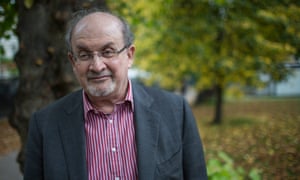





No comments:
Post a Comment